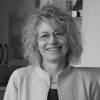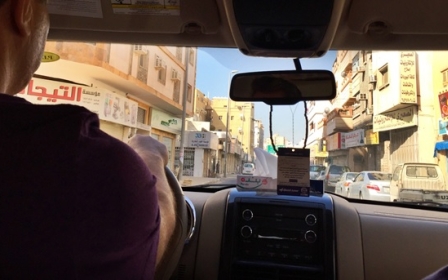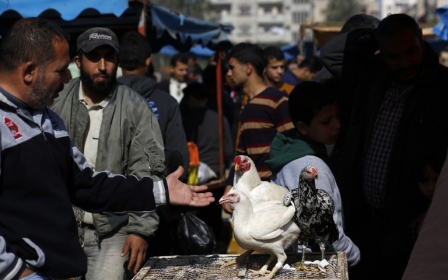60 years of shame: The Palestinian camps in Lebanon

For decades the Palestinian camps in Lebanon have been a dark world of their own, with the texture of daily life bleaker than Gaza, and the appalling refugee camp massacres and sieges of 30 and 40 years ago by Lebanese militias in Tal el Zaatar, Shatila, and other camps, long eclipsed in media consciousness by the Israeli onslaughts and siege of the last decades on Gaza.
Palestinians fleeing from Syria’s war in the last years and months – at least 45,000 people - have found themselves in Lebanon in a far grimmer scenario than they expected, and where the international community offers a shamingly inadequate response.
In the unregistered gatherings of Syrian refugees in the farmlands of the Beqaa valley tents, caravans and mean hovels of wood and aluminium shelter many Palestinians, widows with many small children, elderly women who have lost touch with all their family members, separated children, and gaunt, tired men desperate for some work to feed their families and finding only odd days as casual labourers which cannot begin to meet even food needs, much less the rent and electricity payments, or warm blankets and jackets against the winter chill.
These are not the faces of people who easily ask for money – there is despair and shame as anyone approaches visiting outsiders, children in their arms, to ask for help. Ten years ago in Syria Palestinian refugee families in camps like Yarmouk had children who walked to school from neat clean homes, scored highly in class, went to university and then on to jobs – like their parents - which gave them security and dignity.
They have arrived in Lebanon to an unrecognisable world. The sectarian balancing act of Lebanese politics is enshrined in the country’s constitution: the president must be Christian; the prime minister Sunni Muslim; and speaker of parliament Shia Muslim. There has been near consensus of the Lebanese political class over the decades since the Palestinian refugee influx started in the violent creation of Israel in1948 that the new largely Sunni Muslim Palestinian population could never be allowed civil rights because of the feared impact on this balance.
Lebanon embraced the Palestinian right to return not just on principle, but for fear of this refugee population settling in Lebanon. Fear of resettlement was linked to a denial of basic Palestinian civil rights. Behind this unspoken deal lie decades of Lebanese seeing the Palestinian refugee camps as a security threat – long after the PLO fighters were forced to leave the country for Tunis in 1982.
Factional rivalries remain and insecurity flares periodically inside some camps and is usually controlled by the camp’s own united armed force – visibly well-trained and respected on the street. Heavily armed Lebanese army checkpoints can be seen today in control of the entrance to camps like Nahr el Bahred, Ain El Hilweh and Burj El Shamali. One of their functions is to prevent the refugees bringing building materials into the camp to improve the dilapidated housing conditions.
Lebanese law and ministerial decrees mean the refugees have no automatic right to work, to social security, to joining a union. There are at least 25 banned areas of work in Lebanon for Palestinians, including medicine, law, engineering and pharmacy, and there is no right to ownership of land or property.
A young Lebanese woman will think long and hard before marrying a Palestinian man she loves, knowing that their child will not have the right to her nationality or passport, but will be a second-class citizen in her country, short of rights and future options, with a passport valid for very few countries.
A young Palestinian man who is lucky enough to have a Lebanese mother cannot have her nationality, but he can have a home – registered to his mother, and can be one of the 50 percent or so among Lebanon’s registered 455,000 refugees, who live outside the 12 recognised camps. The most highly educated and resourceful often do find creative ways to work and survive here – with difficulty. But there is an acknowledged brain drain as many of the best also increasingly opt to leave the country if they can find a way. (See Diana Allan’s meticulously researched Refugees of the Revolution, Stanford University Press 2014.)
The crowded, impoverished 1948/9 camps of Nahr el Bared in the north, Shatila, and Burj el Barajneh in Beirut, Ein el Hilweh and Burj el Shemali in Saida and Tyr in the south of the country are today swollen further with the addition of many of the estimated newly arrived 45,000 Syrian Palestinians, who find their way east from the Beqaa valley to the coast camps. Seventy per cent of these adults are estimated to be women and they recount how husbands and sons have been killed, or gone hopefully on the work-seeking trail to Europe, or returned to Syria.
In the camps the newcomers are living among many already destitute people in a cycle of poverty and dependence: a widow with four teenagers, including one son with cancer, lives in one room above a reeking animal shelter; a mother of five lives in a freezing room without a window and has one child who has opted to sleep out in a nearby cemetery with a gang of other boys. In every home women speak of how school dropout rates and unemployment are chronic; of a child who needs coaching to catch up but will not get it; another offered a scholarship who cannot take it because she cannot afford to travel there; and of deep depression.
Thousands of national and international initiatives offer small lifelines to those they can among the chronic disabled, and most needy. Outside, electric wires run in great informal malfunctioning tangles over every alley; water supplies, sewage and drains are antique, overloaded, erratic, and a perpetual health hazard, as they have been for decades.
Sixteen years ago in Shatila a man seeing a group of foreigners with notebooks shouted at us angrily, “Yes, come and look at us. Look. Look. Then go away, and write that we live here like dogs, like dogs.” I was stunned then, and his furious words have never faded. No one should be condemned to live like this. Worst of all is knowing that their children and grandchildren will live these lives too, or worse.
One woman after another in the camps spoke of how dramatically UNRWA’s long-running and deepening resource crisis is affecting her family. Today much-needed treatment, medicines, operations are no longer funded and the sick go without. Demonstrations outside the UNRWA offices, including one man who set himself alight recently, are a desperate daily routine. The organisation is totally over-stretched with all its five work areas in crisis. Last autumn UNRWA schools across the region came within a whisker of not opening after the summer break, with the spectre of 500,000 children on the streets instead of in class.
The 65-year system of depending on grants and voluntary contributions for 97 percent of the UNRWA budget is no longer tenable, but only Palestinian civil society presses for substantive change to the funding system.
Last autumn the Palestinian Human Rights Organisations Council, which includes 21 respected groups, asked the UN General Assembly and the secretary general for a UN resolution for a mandatory obligation on third-party states to fund UNRWA from the UN’s general budget.
They also called for an extension of the mandate to end the present legal protection gap for Palestinian refugees, who do not have the rights of other refugees under UNHCR – reflecting the perception in 1948 of UNRWA as a stop-gap for a temporary problem. But no international or Palestinian authority has had the courage to force these points onto the agenda, preferring to leave yet another generation of unseen Palestinians to lives no one should live.
Against this bleak background there are small local initiatives of young Lebanese, Palestinian and Syrian individuals who have transformed corners of the crisis and who put the world’s impotence to shame.
In a narrow alley in Shatila there is Basmeh and Zeitooneh - a charity started by group of Syrians. Two years on artists and actors have helped to make it a vibrant community centre with 700 exuberant children in school mostly for the first time, a library, and mothers learning to read and write for the first time, embroidery, small start-up businesses, and house renovations.
And an hour south on the coast in Saida is a newly built high school for Syrian refugees, Al Insani, where teachers from Syria, Lebanon and Palestine are giving, free, a level of education in a creative environment, which will ensure these children at least are not the “lost generation” the outside backers of the Syrian war designed for them.
- Victoria Brittain worked at The Guardian for many years and has lived and worked in Washington, Saigon, Algiers, Nairobi, and reported from many African, Asian and Middle Eastern countries. She is the author of a number of books on Africa and was co-author of Moazzam Begg's Guantanamo memoir, Enemy Combatant, author and co-author of two Guantanamo verbatim plays, and most recently of Shadow Lives, the forgotten women of the war on terror. She is on the board of the Institute of Race Relations, a patron of Palestine Solidarity, and co-founder of Action for Palestinian Children.
The views expressed in this article belong to the author and do not necessarily reflect the editorial policy of Middle East Eye.
Photo: Palestinian girls walk at the refugee camp of Nahr al-Bared on the outskirts of the Lebanese northern city of Tripoli on 30 May, 2011 (AFP).
New MEE newsletter: Jerusalem Dispatch
Sign up to get the latest insights and analysis on Israel-Palestine, alongside Turkey Unpacked and other MEE newsletters
Middle East Eye delivers independent and unrivalled coverage and analysis of the Middle East, North Africa and beyond. To learn more about republishing this content and the associated fees, please fill out this form. More about MEE can be found here.





